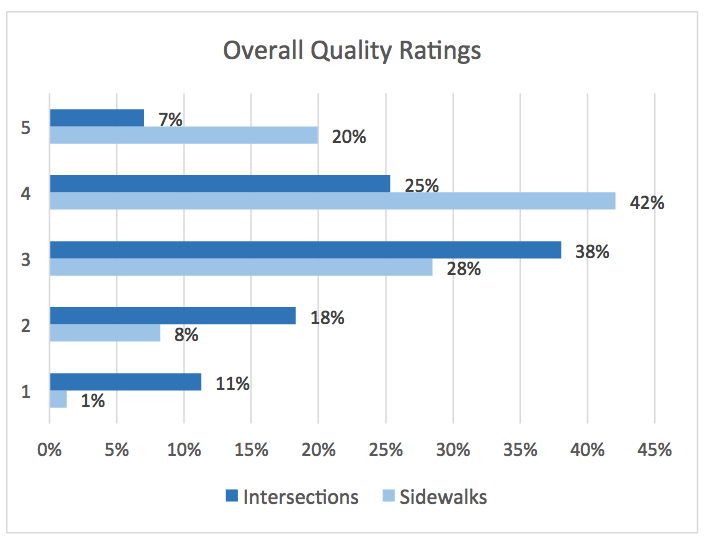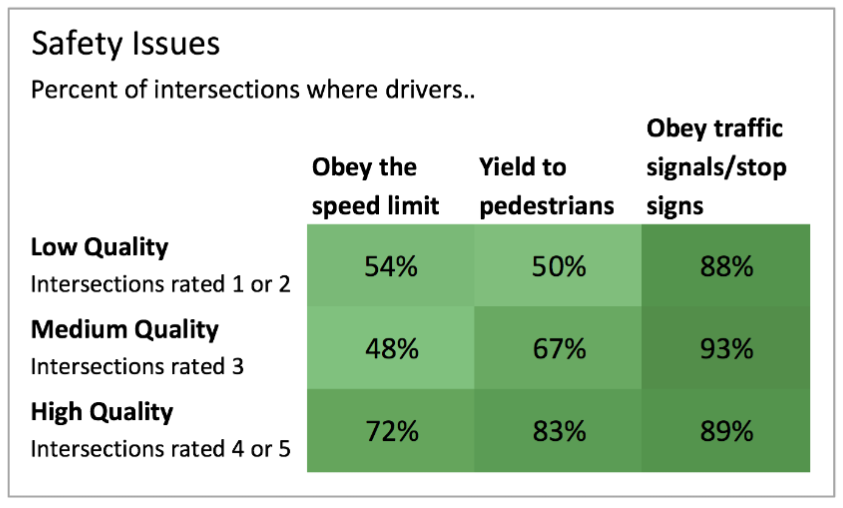WalkDenver Audit Quantifies Difficulty of Walking on East Colfax

A third of the people traveling along East Colfax Avenue and surrounding streets are walking, taking transit or biking, but that doesn’t mean the streets are well-designed for anything other than driving a car. Now, there’s data to prove it from a recent “walkability audit” by WalkDenver.
The report quantifies what many people already know about the East Colfax corridor: A lack of pedestrian infrastructure is compounded by dangerous driving, creating a chasm for people who just want to cross the street.
WalkDenver teamed up with the Colfax Business Improvement District and planning students from the University of Colorado Denver to analyze East Colfax, studying the 1.3-mile stretch between 14th and 16th avenues and Grant and Josephine streets. Students collected data on 316 sidewalk segments and 71 intersections, and used WALKscope to record the quality of the pedestrian environment.
Where Drivers Hit Pedestrians Most
Drivers hit people walking on East Colfax far more often than on surrounding streets. The intersections at Franklin, Pennsylvania, Washington, Logan and High streets see the most crashes. Unsurprisingly, data collectors rated those intersections 3 or lower in terms of quality — meaning the crossing distance is too long, crosswalks aren’t marked, the intersection lacks traffic controls like signals or stop signs, or all of the above.
The intersection of East Colfax and Franklin, which saw the greatest number of pedestrians injured in the study area between 2012 and 2015, received the lowest possible rating of 1.

Overall, drivers were observed obeying speed limits at 56 percent of intersections, yielding to pedestrians at 65 percent of intersections and obeying stop signs or other traffic signals at 90 percent of intersections. East Colfax and 14th Avenue had the most careless drivers, according to the report.
Better Intersections Mean Safer Driving and Safer Crossing
Not surprisingly, higher-quality intersections usually meant drivers were less likely to speed and more likely to obey traffic signals. These intersections tended to have traffic or pedestrian crossing signals, the report found, as well as marked crosswalks in all directions.

So What Now?
As WalkDenver notes in its report, a bus rapid transit line planned for East Colfax, which would reclaim two car lanes, should make for a better walking environment — eventually.
In the meantime, WalkDenver has a bevy of recommendations for Denver Public Works and the Colorado Department of Transportation, including curb extensions to shorten crossing distances, “leading pedestrian intervals” to give walkers a head start on turning drivers, automatic pedestrian phases at signalized intersections to replace “beg buttons,” and raised crosswalks.
The report recommends new traffic signals, either pedestrian-activated or a traditional stop light, at East Colfax and Emerson Street. Another signal could be installed at either Vine or Gaylord streets. The report also suggests redesigning the intersection of East Colfax, Park Avenue and Franklin Street to relocate one block of Park Avenue and create a more pedestrian-friendly crossing.




